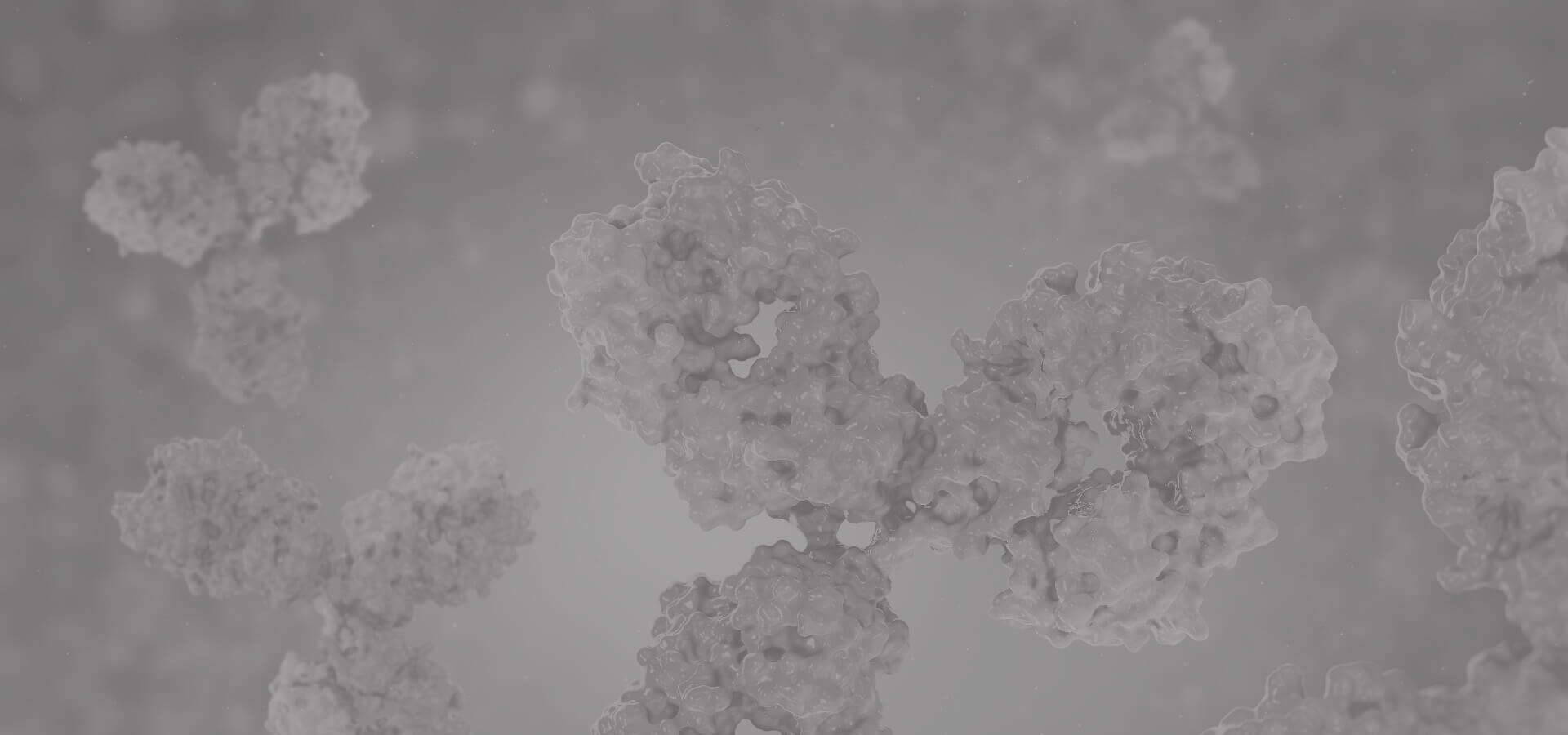CHRM2
The muscarinic cholinergic receptors belong to a larger family of G protein-coupled receptors. The functional diversity of these receptors is defined by the binding of acetylcholine to these receptors and includes cellular responses such as adenylate cyclase inhibition, phosphoinositide degeneration, and potassium channel mediation. Muscarinic receptors influence many effects of acetylcholine in the central and peripheral nervous system. The muscarinic cholinergic receptor 2 is involved in mediation of bradycardia and a decrease in cardiac contractility. Multiple alternatively spliced transcript variants have been described for this gene. [provided by RefSeq, Jul 2008]
Full Name
Cholinergic Receptor Muscarinic 2
Function
The muscarinic acetylcholine receptor mediates various cellular responses, including inhibition of adenylate cyclase, breakdown of phosphoinositides and modulation of potassium channels through the action of G proteins. Primary transducing effect is adenylate cyclase inhibition. Signaling promotes phospholipase C activity, leading to the release of inositol trisphosphate (IP3); this then triggers calcium ion release into the cytosol.
Biological Process
Adenylate cyclase-inhibiting G protein-coupled acetylcholine receptor signaling pathway Source: GO_Central
Adenylate cyclase-modulating G protein-coupled receptor signaling pathway Source: ProtInc
Chemical synaptic transmission Source: GO_Central
G protein-coupled acetylcholine receptor signaling pathway Source: UniProtKB
G protein-coupled receptor signaling pathway Source: Reactome
G protein-coupled receptor signaling pathway, coupled to cyclic nucleotide second messenger Source: GO_Central
Membrane organization Source: Reactome
Nervous system development Source: ProtInc
Phospholipase C-activating G protein-coupled acetylcholine receptor signaling pathway Source: ProtInc
Regulation of heart contraction Source: ProtInc
Regulation of smooth muscle contraction Source: GO_Central
Response to virus Source: UniProtKB
Adenylate cyclase-modulating G protein-coupled receptor signaling pathway Source: ProtInc
Chemical synaptic transmission Source: GO_Central
G protein-coupled acetylcholine receptor signaling pathway Source: UniProtKB
G protein-coupled receptor signaling pathway Source: Reactome
G protein-coupled receptor signaling pathway, coupled to cyclic nucleotide second messenger Source: GO_Central
Membrane organization Source: Reactome
Nervous system development Source: ProtInc
Phospholipase C-activating G protein-coupled acetylcholine receptor signaling pathway Source: ProtInc
Regulation of heart contraction Source: ProtInc
Regulation of smooth muscle contraction Source: GO_Central
Response to virus Source: UniProtKB
Cellular Location
Cell membrane; Postsynaptic cell membrane. Phosphorylation in response to agonist binding promotes receptor internalization.
Involvement in disease
Major depressive disorder (MDD): A common psychiatric disorder. It is a complex trait characterized by one or more major depressive episodes without a history of manic, mixed, or hypomanic episodes. A major depressive episode is characterized by at least 2 weeks during which there is a new onset or clear worsening of either depressed mood or loss of interest or pleasure in nearly all activities. Four additional symptoms must also be present including changes in appetite, weight, sleep, and psychomotor activity; decreased energy; feelings of worthlessness or guilt; difficulty thinking, concentrating, or making decisions; or recurrent thoughts of death or suicidal ideation, plans, or attempts. The episode must be accompanied by distress or impairment in social, occupational, or other important areas of functioning.
Topology
Extracellular: 1-22
Helical: 23-45
Cytoplasmic: 46-59
Helical: 60-80
Extracellular: 81-97
Helical: 98-119
Cytoplasmic: 120-139
Helical: 140-162
Extracellular: 163-184
Helical: 185-209
Cytoplasmic: 210-387
Helical: 388-410
Extracellular: 411-418
Helical: 419-442
Cytoplasmic: 443-466
Helical: 23-45
Cytoplasmic: 46-59
Helical: 60-80
Extracellular: 81-97
Helical: 98-119
Cytoplasmic: 120-139
Helical: 140-162
Extracellular: 163-184
Helical: 185-209
Cytoplasmic: 210-387
Helical: 388-410
Extracellular: 411-418
Helical: 419-442
Cytoplasmic: 443-466
PTM
Phosphorylated in response to agonist treatment.
View more
Anti-CHRM2 antibodies
+ Filters
 Loading...
Loading...
Target: CHRM2
Host: Mouse
Antibody Isotype: IgG2a
Specificity: Human, Mouse, Rat
Clone: CBLNC-156
Application*: WB, IP, IH
Target: CHRM2
Host: Mouse
Antibody Isotype: IgG2a, κ
Specificity: Human
Clone: 4B5
Application*: E, WB
Target: CHRM2
Host: Mouse
Antibody Isotype: IgG1
Specificity: Pig, Human, Mouse, Rat
Clone: 1400
Application*: F, IC, IF, P, IP, WB
Target: CHRM2
Host: Rabbit
Antibody Isotype: IgG
Specificity: Human, Mouse, Rat
Clone: EG682
Application*: WB, IF, IH, F
Target: CHRM2
Host: Mouse
Antibody Isotype: IgG2b
Specificity: Human
Clone: CBFYM-0999
Application*: IH, F
Target: CHRM2
Host: Mouse
Antibody Isotype: IgG2a
Specificity: Human, Mouse, Rat
Clone: CBFYM-0998
Application*: WB, IP, IH
More Infomation
Hot products 
-
Mouse Anti-ENPP1 Recombinant Antibody (CBFYE-0159) (CBMAB-E0375-FY)

-
Mouse Anti-DHFR Recombinant Antibody (D0821) (CBMAB-D0821-YC)

-
Mouse Anti-AKT1/AKT2/AKT3 (Phosphorylated T308, T309, T305) Recombinant Antibody (V2-443454) (PTM-CBMAB-0030YC)

-
Rat Anti-ADGRE4 Recombinant Antibody (V2-160163) (CBMAB-F0011-CQ)

-
Mouse Anti-COL12A1 Recombinant Antibody (CBYY-C3117) (CBMAB-C4560-YY)

-
Mouse Anti-NSUN6 Recombinant Antibody (D-5) (CBMAB-N3674-WJ)

-
Mouse Anti-AK4 Recombinant Antibody (V2-180419) (CBMAB-A1891-YC)

-
Mouse Anti-CASP8 Recombinant Antibody (CBYY-C0987) (CBMAB-C2424-YY)

-
Mouse Anti-ATP1B1 Recombinant Antibody (E4) (CBMAB-0463-LY)

-
Mouse Anti-CFL1 (Phospho-Ser3) Recombinant Antibody (CBFYC-1770) (CBMAB-C1832-FY)

-
Mouse Anti-DMD Recombinant Antibody (D1190) (CBMAB-D1190-YC)

-
Human Anti-SARS-CoV-2 Spike Recombinant Antibody (CR3022) (CBMAB-CR014LY)

-
Mouse Anti-BIRC3 Recombinant Antibody (315304) (CBMAB-1214-CN)

-
Mouse Anti-BRD3 Recombinant Antibody (CBYY-0801) (CBMAB-0804-YY)

-
Mouse Anti-ABCA3 Recombinant Antibody (V2-178911) (CBMAB-A0145-YC)

-
Mouse Anti-CCL18 Recombinant Antibody (64507) (CBMAB-C7910-LY)

-
Mouse Anti-ATP1B3 Recombinant Antibody (1E9) (CBMAB-A4021-YC)

-
Mouse Anti-CD33 Recombinant Antibody (P67.6) (CBMAB-C10189-LY)

-
Mouse Anti-ALOX5 Recombinant Antibody (33) (CBMAB-1890CQ)

-
Mouse Anti-ATP1A2 Recombinant Antibody (M7-PB-E9) (CBMAB-A4013-YC)

For Research Use Only. Not For Clinical Use.
(P): Predicted
* Abbreviations
- AActivation
- AGAgonist
- APApoptosis
- BBlocking
- BABioassay
- BIBioimaging
- CImmunohistochemistry-Frozen Sections
- CIChromatin Immunoprecipitation
- CTCytotoxicity
- CSCostimulation
- DDepletion
- DBDot Blot
- EELISA
- ECELISA(Cap)
- EDELISA(Det)
- ESELISpot
- EMElectron Microscopy
- FFlow Cytometry
- FNFunction Assay
- GSGel Supershift
- IInhibition
- IAEnzyme Immunoassay
- ICImmunocytochemistry
- IDImmunodiffusion
- IEImmunoelectrophoresis
- IFImmunofluorescence
- IGImmunochromatography
- IHImmunohistochemistry
- IMImmunomicroscopy
- IOImmunoassay
- IPImmunoprecipitation
- ISIntracellular Staining for Flow Cytometry
- LALuminex Assay
- LFLateral Flow Immunoassay
- MMicroarray
- MCMass Cytometry/CyTOF
- MDMeDIP
- MSElectrophoretic Mobility Shift Assay
- NNeutralization
- PImmunohistologyp-Paraffin Sections
- PAPeptide Array
- PEPeptide ELISA
- PLProximity Ligation Assay
- RRadioimmunoassay
- SStimulation
- SESandwich ELISA
- SHIn situ hybridization
- TCTissue Culture
- WBWestern Blot

Online Inquiry







